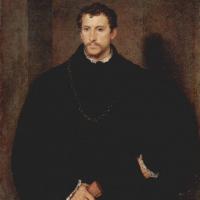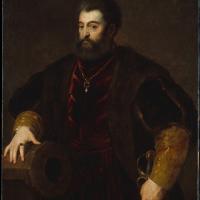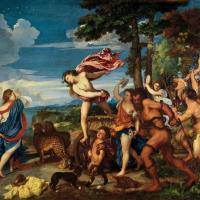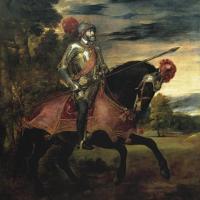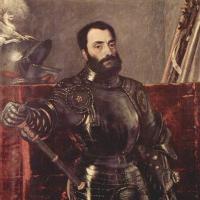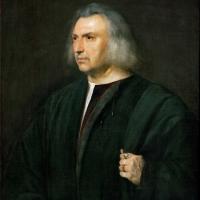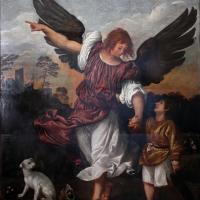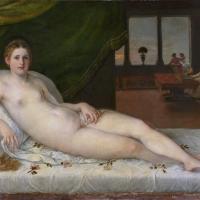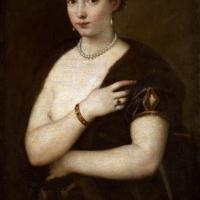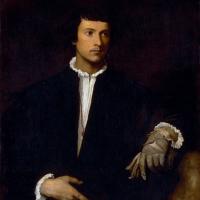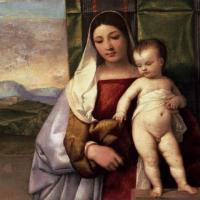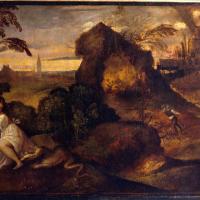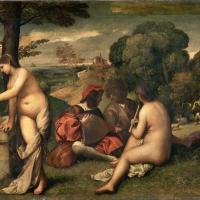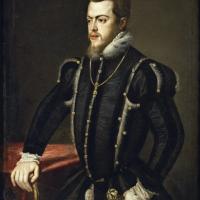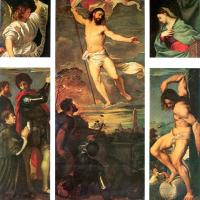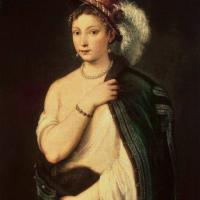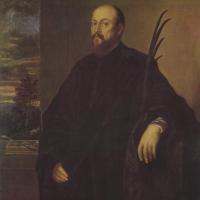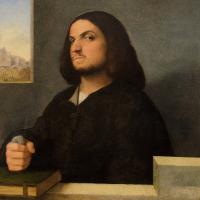Titian
A Young Englishman
$480.00
Alfonso D'Este
$480.00
Amor Sacro Y Amor Profano
$480.00
Bacchus Und Ariadne
$480.00
Bildnis Des Jacopo De Strada
$480.00
Cristoforo Madruzzo
$480.00
Diana And Actaeon
$480.00
Emperor Charles V With A Dog
$480.00
Filippo Archinto
$480.00
Liggie Venus
$480.00
Man With A Glove
$480.00
Maria Mit Kind
$480.00
Orpheus And Eurydice
$540.00
Pastoral Concert
$480.00
Philip II of Spain
$480.00
Polittico Averoldi
$600.00
Titian
Titian (1488/1490-1576)
Tiziano Vecelli or Tiziano Vecellio (1488/1490 – 27 August 1576), known in English as Titian /ˈtɪʃən/, was an Italian painter, the most important member of the 16th-century Venetian school. He was born in Pieve di Cadore, near Belluno, then in the Republic of Venice). During his lifetime he was often called da Cadore, taken from the place of his birth.
His career was successful from the start, and he became sought after by patrons, initially from Venice and its possessions, then joined by the north Italian princes, and finally the Habsburgs and papacy. Along with Giorgione, he is considered a founder of the Venetian School of Italian Renaissance painting.
During the course of his long life, Titian's artistic manner changed drastically, but he retained a lifelong interest in colour. Although his mature works may not contain the vivid, luminous tints of his early pieces, their loose brushwork and subtlety of tone were without precedent in the history of Western painting.
Titian's skill with colour is exemplified by his Danaë, one of several mythological paintings, or "poesie" ("poems") as the painter called them. This painting was done for Alessandro Farnese, but a later variant was produced for Philip II, for whom Titian painted many of his most important mythological paintings. Although Michelangelo adjudged this piece deficient from the point of view of drawing, Titian and his studio produced several versions for other patrons.
Another famous painting is Bacchus and Ariadne, depicting Theseus, whose ship is shown in the distance and who has just left Ariadne at Naxos, when Bacchus arrives, jumping from his chariot, drawn by two cheetahs, and falling immediately in love with Ariadne. Bacchus raised her to heaven. Her constellation is shown in the sky. The painting belongs to a series commissioned from Bellini, Titian, and Dosso Dossi, for the Camerino d'Alabastro (Alabaster Room) in the Ducal Palace, Ferrara, by Alfonso I d'Este, Duke of Ferrara, who in 1510 even tried to commission Michelangelo and Raphael.
During the next period (1530–1550), Titian developed the style introduced by his dramatic Death of St. Peter Martyr. In 1538, the Venetian government, dissatisfied with Titian's neglect of his work for the ducal palace, ordered him to refund the money he had received, and Il Pordenone, his rival of recent years, was installed in his place. However, at the end of a year Pordenone died, and Titian, who meanwhile applied himself diligently to painting in the hall the Battle of Cadore, was reinstated.
Less successful were the pendentives of the cupola at Santa Maria della Salute (Death of Abel, Sacrifice of Abraham, David and Goliath). These violent scenes viewed in perspective from below were by their very nature in unfavorable situations. They were nevertheless much admired and imitated, Rubens among others applying this system to his forty ceilings (the sketches only remain) of the Jesuit church at Antwerp.
At this time also, during his visit to Rome, the artist began a series of reclining Venuses: The Venus of Urbino of the Uffizi, Venus and Love at the same museum, Venus—and the Organ-Player, Madrid, which shows the influence of contact with ancient sculpture. Giorgione had already dealt with the subject in his Dresden picture, finished by Titian, but here a purple drapery substituted for a landscape background changed, by its harmonious colouring, the whole meaning of the scene.
From the beginning of his career, Titian was a masterful portrait-painter, in works like La Bella (Eleanora de Gonzaga, Duchess of Urbino, at the Pitti Palace). He painted the likenesses of princes, or Doges, cardinals or monks, and artists or writers. "...no other painter was so successful in extracting from each physiognomy so many traits at once characteristic and beautiful". Among portrait-painters Titian is compared to Rembrandt and Velázquez, with the interior life of the former, and the clearness, certainty, and obviousness of the latter.
These qualities show in the Portrait of Pope Paul III of Naples, or the sketch of the same Pope Paul III and his Grandsons, the Portrait of Pietro Aretino of the Pitti Palace, the Portrait of Isabella of Portugal (Madrid), and the series of Emperor Charles V of the same museum, the Charles V with a Greyhound (1533), and especially the Equestrian Portrait of Charles V(1548), an equestrian picture in a symphony of purples. This state portrait of Charles V (1548) at the Battle of Mühlberg established a new genre, that of the grand equestrian portrait. The composition is steeped both in the Roman tradition of equestrian sculpture and in the medieval representations of an ideal Christian knight, but the weary figure and face have a subtlety few such representations attempt. In 1532, after painting a portrait of the emperor Charles V in Bologna, he was made a Count Palatine and knight of the Golden Spur. His children were also made nobles of the Empire, which for a painter was an exceptional honor.
As a matter of professional and worldly success, his position from about this time is regarded as equal only to that of Raphael, Michelangelo and, at a later date, Rubens. In 1540 he received a pension from d'Avalos, marquis del Vasto, and an annuity of 200 crowns (which was afterwards doubled) from Charles V from the treasury of Milan. Another source of profit, for he was always aware of money, was a contract obtained in 1542 for supplying grain to Cadore, where he visited almost every year and where he was both generous and influential.
Titian had a favorite villa on the neighboring Manza Hill (in front of the church of Castello Roganzuolo) from which (it may be inferred) he made his chief observations of landscape form and effect. The so-called Titian's mill, constantly discernible in his studies, is at Collontola, near Belluno.
He visited Rome in 1546 and obtained the freedom of the city—his immediate predecessor in that honor having been Michelangelo in 1537. He could at the same time have succeeded the painter Sebastiano del Piombo in his lucrative office as holder of the piombo or Papal seal, and he was prepared to take Holy Orders for the purpose; but the project lapsed through his being summoned away from Venice in 1547 to paint Charles V and others in Augsburg. He was there again in 1550, and executed the portrait of Philip II, which was sent to England and was useful in Philip's suit for the hand of Queen Maryland.
Contemporary estimates attribute around 400 works to Titian, of which about 300 survive. Two of Titian's works in private hands were put up for sale in 2008. One of these, Diana and Actaeon, was purchased by London's National Gallery and the National Galleries of Scotland on 2 February 2009 for ₤50 million. The galleries had until 31 December 2008 to make the purchase before the work would be offered to private collectors, but the deadline was extended. The other painting, Diana and Callisto, was for sale for the same amount until 2012 before it was offered to private collectors. The sale created controversy with politicians who argued that the money could have been spent more wisely during a deepening recession. The Scottish Government offered ₤12.5 million and ₤10 million came from the National Heritage Memorial Fund. The rest of the money came from the National Gallery and from private donations.


